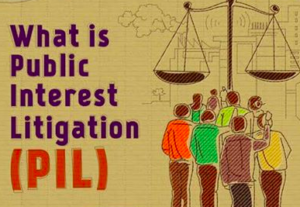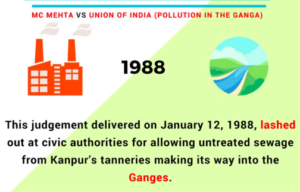Procedure to file Public Interest Litigation PIL
Procedure to file Public Interest Litigation PIL
INTRODUCTION
Public Interest Litigation in India denoted an age in the year 1979 when it was recorded against the insensitive conditions that were allotted to the detainees on preliminary. In the well known case, Hussainara Khatoon v. State of Bihar, a PIL was filed by an advocate in the apex court based on an article distributed in the daily paper Indian Express, which put into fore the poor living state of undertrial detainees in different correctional facilites in the province of Bihar. The Supreme Court took perception of the issue and this at last prompted the arrival of about 40,000 undertrial detainees mulling in bedraggled prisons in Bihar.
The Public Interest Litigation development in India was additionally proclaimed for the situation SP Gupta v. Union of India, likewise known by the moniker – ‘The Judges Transfer case’, the judgment of which was conveyed by Justice PN Bhagwati. It was held for this situation that, any individual from the general public/open acting bonafide can record a writ Petetion in any High Court or the Supreme Court to look for redressal against infringement of a legitimate/constitutional right. Because of this judgment, PIL turned into a strong apparatus for the denied segment/class of the general public when the right(s) of the general public or a gathering of people are imperiled by the legislature bringing about open damage. A PIL can be documented by a gathering of individuals by and large as well as by any individual specifically/by implication associated or even not associated with the reason or they can be spoken to by a supporter.
In the year 1981, the brutalities of the Police against the detainees was uncovered on account of Anil Yadav v. State of Bihar, where a news report uncovered that around 33 presumed lawbreakers were blinded by the police by emptying corrosive at them. The apex court not just arranged the Government of Bihar to convey the blinded unfortunate casualties for treatment to Delhi yet in addition requested a rapid arraignment of the policemen associated with the episode. The court for this situation additionally perceived the privilege of free lawful guide as a principal right of each denounced. The petetioner, Anil Yadav, denoted a beginning of social activism and insightful suit.

Meaning and Definition
As defined in the Black’s Law Dictionary, PIL means “a legal action initiated in a court of law for the enforcement of certain rights that are in the interest of the public where the class of community may or may not have a pecuniary interest or any other interest by which their legal rights are affected”.
Idea of Public Interest Litigation
Under Article 32 of the Indian Constitution, only the aggrieved individual has the right to file a writ in the Supreme Court. Article 32 of our Constitution confers right upon an individual to move to the apex court by appropriate proceedings for the enforcement of rights/duties under the constitution.
Justice PN Bhagwati articulately explained the concept of Public Interest Litigation in SP Gupta v. Union of India in the year 1981. He said, “Whenever a legal wrong or a legal injury is committed upon an individual or a particular class of individuals by reason of violation of any fundamental/legal right or without authority of law any legal wrong is committed or legal injury is inflicted upon, or any illegal burden is inflicted upon downtrodden section of individual(s) by reasons of poverty, disability, helplessness, poor economic and social conditions, are unable to approach the judiciary for relief then any member of the society can file a writ under Article 226 of the Constitution in the High Court and in case of a breach in the fundamental rights of such individuals or class of individuals, relief can be sought in the Supreme Court by virtue of Article 32 of the Constitution.”
Writ Jurisdiction under the Constitution of India
Article 32 of the Indian Constitution is referred to as the ‘Doctrine of Constitutional Remedy’ for enforcement of fundamental rights. The Father of Indian Constitution, Dr BR Ambedkar, dubbed Article 32 as the ‘heart and soul’ of the Indian Constitution. The Supreme Court vindicated the importance given to this article as it provides justice to the economically and socially deprived sections of the society.
The Supreme Court proceeded to extend the term ‘suitable procedures’ made reference to under article 32 by saying, the term does not allude to the ‘shape’ in which the application/writ is to be recorded yet to the motivation behind the procedure. For whatever length of time that the goal of the procedure is to authorize key rights, the ‘frame’ winds up irrelevant. This type of translation offered ascend to epistolary locale by which even wires and letters were acknowledged as writ petitions.
A PIL can be filed in the apex court under article 32 of the constitution or before the High Court under Article 226 of the constitution.

Subjects of Public Interest Litigation
Matters pertaining to the public interest – generally include and not limited to the following issues:
- Petitions from the riot victims;
- Environmental pollution, ecological imbalance;
- Food adulteration, preservation of heritage, culture, forests and wildlife;
- Exploitation of economically and socially downtrodden sections of the society (Scheduled Castes/Scheduled Tribes etc);
- Welfare of children;
- Other matters related to public interest.
Matters that are private/civil in nature generally include but not limited to the following:
- Admission related issues to colleges/universities of national importance. (Indian Institutes of Technology, Indian Institutes of Management, National Law Universities, to name a few);
- Seeking investigation by an agency other than the local law enforcement (Like Central Bureau of Investigation, National Investigation Agency);
- Service-related matters;
- LandOwner-Tenant matters;
- Threat/intimidation of the petitioner(s) by private individuals.
Petitions can be filed by letters and even electronically as well online or by simply writing an E-mail addressed to the Chief Justice of India. Petitions that are not of public interest can also be treated as writ petitions subject to the discretion of the Judge of the Supreme Court/High Court concerned. Such matters may include but are not limited to the following:
- Police torture;
- Kidnapping;
- Offences related to Women/Children;
- Petition regarding Pensions;
- Petition regarding refusal of the law enforcement to file FIR(s)
Procedure for filing a Public Interest Litigation
The modus operandi for filing a PIL may be divided in two routes:
- Filing: A PIL is filed in the same manner as a writ petition is filed either in the Supreme Court (Article 32) or in the High Court (Article 226). If the PIL is to be filed in the High Court, then two copies of the petition have to be filed and if the PIL is to be filed in the Supreme Court, then the petition has to be filed in five sets (4+1). Also, it is imperative to serve an advance copy of the petition on each respondent/opposite party and the proof of having served the copy of the petition to the respondent(s) has to be affixed with the petition – that can be in the form of postal or courier receipts.
- Procedure: A court fee amounting to Rs. 50 per respondent (for more than one, each respondent will have to pay Rs. 50 as court fee) has to be affixed to the petition. The proceedings in a PIL hearing are carried out in the same way as in another case irrespective of its nature. However, during the PIL proceedings, if the presiding judge feels a court commissioner has to be appointed to investigate the matter in question like inquiry on allegations of pollution being caused, trees being cut among other things. Post reply by the respondent(s) or rejoinder by the petitioner, the judge(s) may give his/her decision.
It is appropriate to take note of that before recording a PIL, it is rebuked that the solicitor initially brings the debate before the significant experts and give them adequate time to follow up on it. Be that as it may, when no move is made or the candidate isn’t happy with the reaction/activity, they may document a PIL under the watchful eye of the concerned official courtroom, High Court or the Supreme Court.
Against whom a Public Interest Litigation can be filed
A PIL can be documented against the Central government, State governments, city partnerships and whatever other expert that comes surprisingly close to a ‘state’ as characterized under Article 12 of the Indian Constitution. Article 12 of the Indian constitution incorporates the accompanying:
- The Government (central and state);
- Parliament of India, Legislative Assemblies/Councils of all states and Union Territories;
- Any local or other authorities within the delimitations of India and controlled directly/indirectly by the government.
- Other authorities
The Public Sector Undertakings (PSUs), government enterprises, government institutions, Government agencies come within the ambit of Article 12 of the constitution. In Electricity Board, Rajasthan v. Mohan Lal, the apex court held that ‘other authorities’ include all the institutions/authorities that are created by the Indian constitution and upon whom powers are conferred by law. A ‘private party’ can be made a ‘respondent’ only when the state is made a party to it.
Aspects of Public Interest Litigation
- Remedial in Nature: The remedial nature of Public Interest Litigation is a result of its tectonic shift from the traditional ‘locus standi’ rules. It incorporated the Fundamental Duties under Part IV of the Indian constitution into Part III of the constitution which mentions Fundamental Rights. By this change, the ‘straitjacketed’ nature was shifted to a more dynamic welfare oriented one.
- Representative Standing: This is an exception to the general ‘locus standi’ rule which allows a third party to file a habeas corpus in cases where the aggrieved party cannot appear before the court.
- Citizen Standing: This doctrine of citizen standing marked an epoch in the significant expansion of the court’s rule from a ‘protector’ of individual rights to a ‘guardian’ of the rule of law whenever the latter is threatened by official apathy.
- Non-Adversarial Litigation: The apex court in People’s Union for Democratic Rights v. Union of Indiadistinguished traditional litigations from Public Interest Litigation. It said PIL is a different kind of litigation which is substantially different from the adversarial form of litigation where one party seeks relief against the other party and that another party (opponent party) opposes such claims. Non-adversarial litigation has two aspects:
(i) Collaborative Litigation: In such form of litigation, the effort to provide justice is from all sides namely the petitioner, the court, the government/public official to check if the human rights of every individual are not violated. PIL petitions help the government/executive discharge their constitutional functions. The court assumes three different functions to deliver justice – different from its traditional role of determinations and issuance of the decree.
- Ombudsman: An ombudsman is a quasi-judicial body where the citizen may file a written complaint in a prescribed format and submit it to them for quick redressal.
- Forum: The courts provide a forum as a place to deliberate on public issues at length and provide emergency relief through interim orders. Different forums include- National Lok Adalat, Permanent Lok Adalat to name a few.
- Mediator: The court may also act as a mediator to settle disputes. It is primarily focused on personal, business, family, social and community matters.
(ii) Investigative Litigation: In most of the cases, the court appoints officials like the District Magistrate, Superintendent of Police, Central Bureau of Investigation, National Human Rights Commission or even ad-hoc commissions of enquiry in socio-political-legal matters. This is called investigative litigation.e. Crucial Aspects: The Supreme Court in Sheela Barse v. State of Maharashtra, the apex court issued guidelines to curtail custodial violence. The Supreme Court broadened the meaning of the right to live with dignity as given under Article 21 of the Indian constitution.f. Epistolary Jurisdiction: The term ‘epistolary’ means ‘in the form of letters’. As mentioned earlier, the apex court started accepting PILs in the form of letters, emails. Telegrams etc. The main purpose of introducing such a concept was to focus on the purpose of the PIL than its form.

Factors leading to the growth of Public Interest Litigation
PIL is an aftereffect of legal activism. It has turned into an instrument to address open issues under the steady gaze of the court inside the limits of the legitimate and protected form. Open Interest Litigations have assumed a generous job in maintaining essential privileges of the general population and uncovering the dormant and additionally patent social issues and finding a solution for them. PIL is a weapon that must be utilized with incredible consideration and vigilance. It is the obligation of the court to check whether such an instrument isn’t being infringed upon the circle saved by the constitution to the official and lawmaking body under the attire of changing the general population complaint.
The primary explanation behind the development of Public Interest Litigation in India was its bureaucratic ‘latency’ and the indifference of the official towards the issues looked by the general public particularly the oppressed areas of the general public. The organization in India still has an opposing disposition instead of a supportive one towards general society. There is no system for redressal of open complaints in the nation. For a considerable length of time there have been discussions of setting up a Lokpal Ombudsman however it is as yet an inaccessible reality. Henceforth, till date, a distressed individual just has courts for redressal of its complaints. Thus, the component built up for the insurance of the earth has ended up being insufficient and consequently, the choice of PIL is turned to for the security of the earth. The organization comes up short on a feeling of responsibility and duty while the lawmaking body centers around issues that are random to the welfare of the preletariat. Every one of these elements prompted the development of Public Interest Litigation in India. The courts in India have assumed a considerable job in advancing the welfare of the general population and controlling the waywardness of the official in the nation.
Conclusion
PIL has turned out to be an imperative instrument for social change. PIL works for everybody independent of rank, class, sexual orientation and so on. The presentation of this apparatus has demonstrated gainful for a creating nation like India. PIL has been used as a system to counter the barbarities by the underprivileged in the general public. Be that as it may, it is likewise critical to check for the abuse of this device. Paltry PILs are likewise documented under the appearance of voicing of the discouraged segments of the general public. Supporters document PILSs to collect spotlight – this invalidates the specific point of PILs. Consequently, it winds up imperative to separate between a certifiable and a pointless PIL. Citing Cunnigham, he once said – “Indian PIL may rather be a Phoenix: a radical new creative arising out of the ashes of the old order.”
